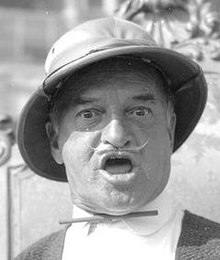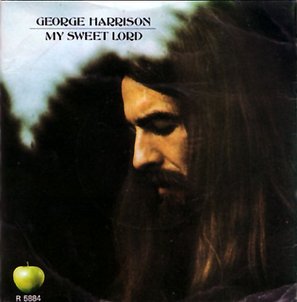This is one of those things that starts with a story.
Several months ago I attended a podcasting conference, my first one. And one of the presentations there came from the folks at Patreon. They had all kinds of cool ideas about how You Can Monetize Your Podcast And Life the Comfortable Life Forever As A Professional Podcaster (I’m way overselling their oversell, but you get the idea). So with a little bit of their guidance I signed up and set up a Patreon page.
But while I was doing that setup, I realized that I didn’t really have a lot extra to offer someone who took the time to send me money. I couldn’t guarantee bonus episodes because I’m crushed for time, especially during the year. And stickers/mugs/other merch…I dunno. It frankly felt a little bit weird. So I looked at what other shows were doing and I got some ideas from them, but they also had WAY more listeners than I did (do), so their stuff scaled up pretty easily. I put in just enough to get the page active (there was a time constraint to setting up, but I don’t remember why), and I pretty much walked away from the idea. Didn’t mention it here, didn’t mention it during the show, didn’t mention it in the social media.
And then…and then.
Someone found it anyway.
So despite the relatively small return on investment, Gary Black took the time to poke around the internet to determine whether I had a Patreon page, and not only did he find it, he bought into it. Thanks so much, Gary!
So I guess it’s time to go public. While this podcast is, indeed, a labor of love, and I’ve borne all the expenses on my own so far, it does cost me a few hundred bucks each year to deal with hosting and bandwidth (which has gone up since I’ve accumulated listeners), plus equipment, not to mention that I pay for some of the artwork that accompanies episodes, and I buy lots of books each year to aid my research. In short, it’s an expensive hobby, especially since I committed early on not to run ads.
So while I’m not at the level of begging, I am thankful for any support and/or assistance you can throw my way. If you can afford to support the show, Great. If you can’t? No harm, no foul. I still love you.
Here’s the link to my page: https://www.patreon.com/HowGoodItIs
Tune in later tonight for a look at a hit by The Kinks!


 In 1975, George was at the Midem Music Festival, which is a trade show that’s been held in Cannes, France, every year since 1967. At the festival, he met up with a man named George Greif. Harrison remarked that Greif reminded him of the late comedian Lord Buckley (seen here at left). Coincidentally, Greif had been Buckley’s manager back in the day, and he invited George to come visit him at Buckley’s home in Los Angeles, which he referred to as “Crackerbox Palace”.
In 1975, George was at the Midem Music Festival, which is a trade show that’s been held in Cannes, France, every year since 1967. At the festival, he met up with a man named George Greif. Harrison remarked that Greif reminded him of the late comedian Lord Buckley (seen here at left). Coincidentally, Greif had been Buckley’s manager back in the day, and he invited George to come visit him at Buckley’s home in Los Angeles, which he referred to as “Crackerbox Palace”. Also of note is that, in addition to the “This Song” promotional film, George made one out of “Crackerbox Palace” as well, which also aired during the November 20, 1976 episode of Saturday Night Live. If you catch the re-run that’s been cut to an hour, though, this one usually gets cut based on the time considerations. It’s also pretty whimsical, though not as obviously comedic as “This Song”.
Also of note is that, in addition to the “This Song” promotional film, George made one out of “Crackerbox Palace” as well, which also aired during the November 20, 1976 episode of Saturday Night Live. If you catch the re-run that’s been cut to an hour, though, this one usually gets cut based on the time considerations. It’s also pretty whimsical, though not as obviously comedic as “This Song”.  Directed by Eric Idle, it features future Rutle Neil Innes as the nanny (above, right) and agai his future wife Olivia appears briefly in the bedroom shot (on the left). And while it wasn’t shot at Buckley’s house, it was shot at Friar Park, George’s home from 1970 until his death in 2001. Some have said that he occasionally referred to Friar Park as “Crackerbox Palace,” but I haven’t been able to nail that one down for sure.
Directed by Eric Idle, it features future Rutle Neil Innes as the nanny (above, right) and agai his future wife Olivia appears briefly in the bedroom shot (on the left). And while it wasn’t shot at Buckley’s house, it was shot at Friar Park, George’s home from 1970 until his death in 2001. Some have said that he occasionally referred to Friar Park as “Crackerbox Palace,” but I haven’t been able to nail that one down for sure. This week the podcast visited a chunk of George Harrison’s life, specifically the aftermath of the copyright infringement lawsuit surrounding “My Sweet Lord” and the tune inspired by the suit, titled “This Song”.
This week the podcast visited a chunk of George Harrison’s life, specifically the aftermath of the copyright infringement lawsuit surrounding “My Sweet Lord” and the tune inspired by the suit, titled “This Song”.

 When it first reached #2 the week of July 26, 1975, the #1 song was “The Hustle” by Van McCoy.
When it first reached #2 the week of July 26, 1975, the #1 song was “The Hustle” by Van McCoy.
:format(jpeg):mode_rgb():quality(40)/discogs-images/R-468574-1420387458-2989.jpeg.jpg) Finally, on my oldest daughter’s (negative seventeenth) birthday, it was “Jive Talkin'” by the Bee Gees.
Finally, on my oldest daughter’s (negative seventeenth) birthday, it was “Jive Talkin'” by the Bee Gees.